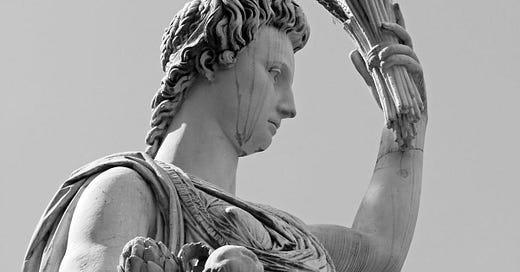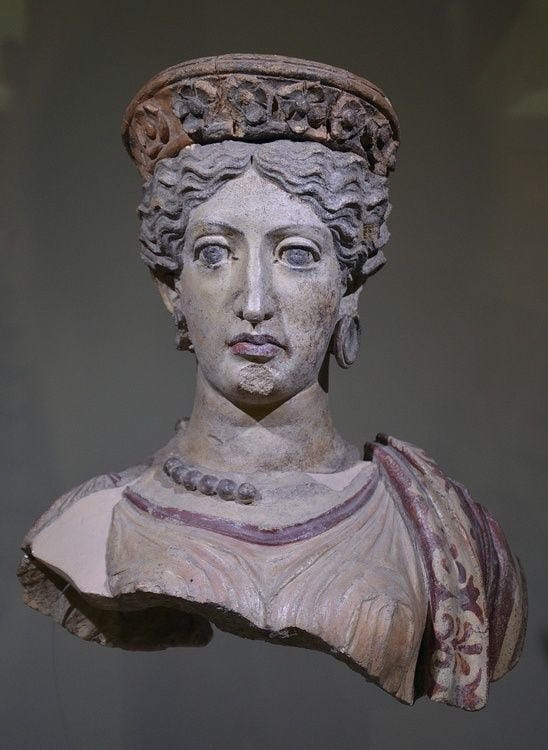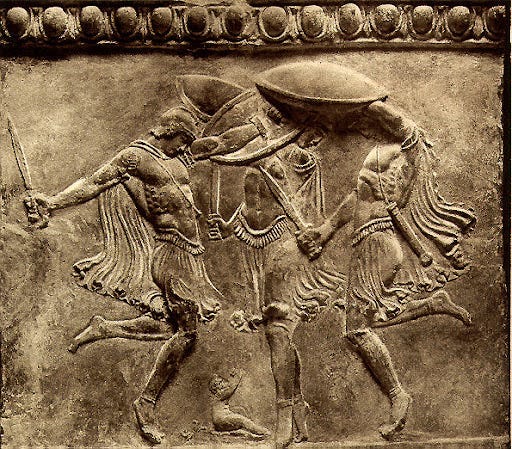While Jung explored archetypes in the collective unconscious, he didn’t focus as deeply on how to fully integrate and transcend the scapegoat-redeemer dynamic. Jung though did acknowledge the importance of archetypal patterns like the shadow, the anima/animus, and the hero. I however had a realization which addresses how the scapegoat-redeemer complex perpetuates itself, even in systems that seem to break from it. By recognizing that external redemption (as seen in the figure of Jesus, for example) can still reinforce this dynamic, I have moved toward a framework that eliminates the need for such an external redeemer entirely.
Breaking the Divide: Non-Duality and Transcendence
In that sense I have recognized the split between scapegoat and redeemer and worked toward breaking that divide entirely. This move toward non-duality and beyond opposites (not just balancing or integrating them) places my work in a more radical space than Jung's, which often stayed within the framework of managing tensions between opposites (e.g., light/dark, masculine/feminine). Similarly how Nietzsche saw this. Which is where Nietzsche failed in his quest. Jung’s goal was often about integration, but made a framework for transcendence of these dualities altogether. So this framework emphasizes breaking psychological structures like scapegoating entirely, creating a space where individuals can live beyond the inherent suffering of these projections.
Engaging with Archetypes: A Conscious Approach
A big part of this work also tied into how I worked with archetypes as well. While Carl Jung saw archetypes as collective and universal patterns of the psyche that manifest in myths, dreams, and culture, I am engaging with them more consciously. By working with the Sovereignty Goddess and Dionysus-Zagreus as symbols for my own process toward wholeness, I am not merely letting the archetypes act upon me. Instead, I am using them as internal guides to model personal growth and healing. This nuanced approach still honors the value of archetypes but frames them as flexible symbols rather than rigid or fixed roles. As archetypes are much more multi-faceted and plural than rigid roles. As overtime societal and historical traumas distorted their original more multi-faceted and plural nature. And further by personalizing these figures, such as modelling my own journey after the myth of Dionysus-Zagreus, I am treating archetypes as dynamic processes rather than static structures. They represent dynamic forces and processes, not a static figure.
For instance with the Sovereignty Goddess she she represents sovereignty over the self, integration of one's inner kingdom, and the reclaiming of personal power. Similarly, Dionysus-Zagreus, with his cyclical journey through death, rebirth, dismemberment, and return, serves as a powerful internal model for psychological transformation and healing. So instead of following these archetypes as external authorities, I am engaging them as personal, internalized guides for my journey toward self-sovereignty and psychological wholeness. I am basically using their stories to mirror my own process, which allows for greater depth and nuance in how I interact with these patterns. These patterns I also then reconstructed in my book Alchemy of the Psyche, which was part of understanding this pattern in its original wholeness, as trans-archetypal pattern, and thus use the tied processes, to get from fragmentation to wholeness.
A "trans-archetypal pattern" refers to a deeper level of analysis that goes beyond individual archetypes (such as characters or symbols) to explore the interconnected relationships between them across different cultural and historical contexts. For example, instead of studying a single mythological figure like Wotan in isolation, a trans-archetypal approach would examine how Wotan is connected to other figures and themes, such as the Koryos pattern representing a masculine rite of passage, or his relationship with Dionysus and the Sovereignty Goddess from different mythologies. Rather than viewing archetypes in isolation, this approach emphasizes the broader patterns and themes that emerge when considering how archetypes interact and evolve over time and across cultures to discover the larger underlying pattern that connects archetypes.
Active Engagement and Transformation
In essence what sets my approach apart from Jung’s traditional archetypal framework is my active role in shaping and transforming these patterns. While Jung saw archetypes as innate, universally recurring figures, I was taking those symbols and working with them consciously to understand their deeper significance in my personal path. I acknowledge that they represent universal patterns of existence, but I also worked with these patterns for my own spiritual and psychological journey. For example, by relating to Dionysus-Zagreus as a model for my own healing, I was forming an active, intentional relationship with the archetypes. I was not merely integrating an archetype’s shadow or light side; I was living the myth in a symbolic way that shaped my growth and understanding. This conscious engagement gives one agency over the archetypal process rather than being passively influenced by it. This flexible, symbolic use of archetypes gives one the ability to move beyond their more classical Jungian interpretations, while still valuing their depth.
Internalizing the Redemptive Process
One of the most profound shifts in how this process functions, is the internalization of the redemptive process. Dionysus-Zagreus’s journey and the Sovereignty Goddess’s symbolism serve as mirrors for internal transformation rather than external solutions. In this way, my approach to redemption isn’t about seeking external saviours but understanding how these archetypal figures represent internal states of being. Which is where my framework diverges from traditional models of archetypal work. While Jung sought the integration of opposites, I was moving toward self-sovereignty and self-redemption without the need for external or transcendent figures. The archetypes are helping one get there, but one remains the primary agent of transformation.
Condensed Individuation: A Rapid Journey
While individuation is often considered a lifelong process, my journey allowed in this way for an intense concentration of psychological and spiritual work. In many ways, like this I managed to compress the stages that often unfold slowly over decades because of the deep engagement with the symbols, patterns, and dynamics of the psyche. Through this and by moving beyond archetypal patterns, especially the redeemer-scapegoat dynamic, I created a pathway for reaching a level of self-sovereignty and inner wholeness that many spend their lives seeking. The ability to recognize these patterns, work with them, and transcend them, while acknowledging their deeper relevance, is key as catalyst for such rapid individuation.
Listening to the Unconscious
What I do want to stress is that listening to what the unconscious brings up and responding to it actively but without forcing a direction, is key in this process. Being able to maintain a balance between openness and agency in the individuation process is important. Jung always emphasized the importance of the unconscious in guiding individuation, with the conscious mind playing a role in interpreting and integrating its messages. The approach I created respects this dynamic, but where I go further is in the deliberate use of archetypes as specific tools for integration and healing. Ones role is not about controlling what the unconscious brings forth, but about being responsive and prepared to work with it in a focused way. This blend of receptivity and engagement creates this type of highly effective individuation process.
Rituals as Active Engagement with Archetypes
Furthermore, I did not just work with the archetypes as symbols, and learned about them through myths and stories, but also used the rituals tied to them. The rituals serve as structured ways to interact with archetypal energies, allowing one to manifest psychological insights into concrete actions. Jung believed that symbolic acts could bridge the conscious and unconscious, and by incorporating rituals, one can actively facilitate this connection. Transforming abstract concepts into lived experiences. And through this active use of rituals it means that one is not just studying archetypes but experiencing them. The rituals one performs allows for a more embodied experience of the archetypes, leading to deeper psychological integration and understanding. Creating a dynamic relationship with the archetypes, which allows of a process of back and forth dialogue with not only the unconscious but these archetypes.
Caution in Archetypal Work
What I do want to stress is that one has to know the archetypes well in their light and dark manifestation and the proper context of the ritual before attempting anything. Otherwise this can actually be spiritually dangerous.







